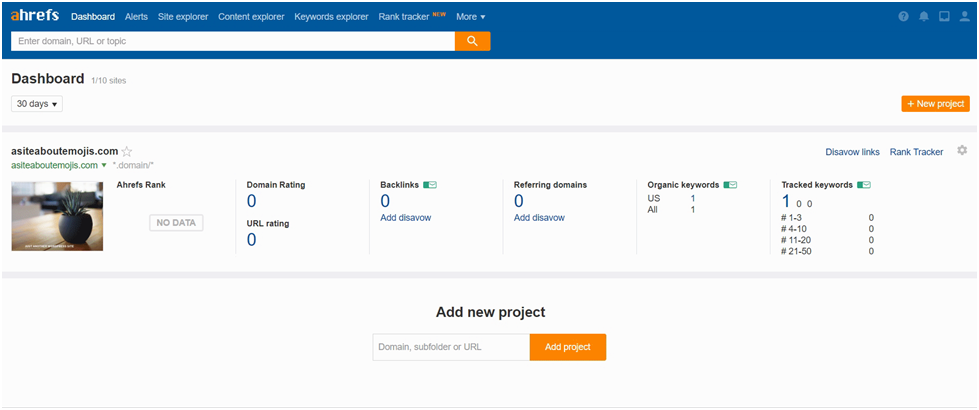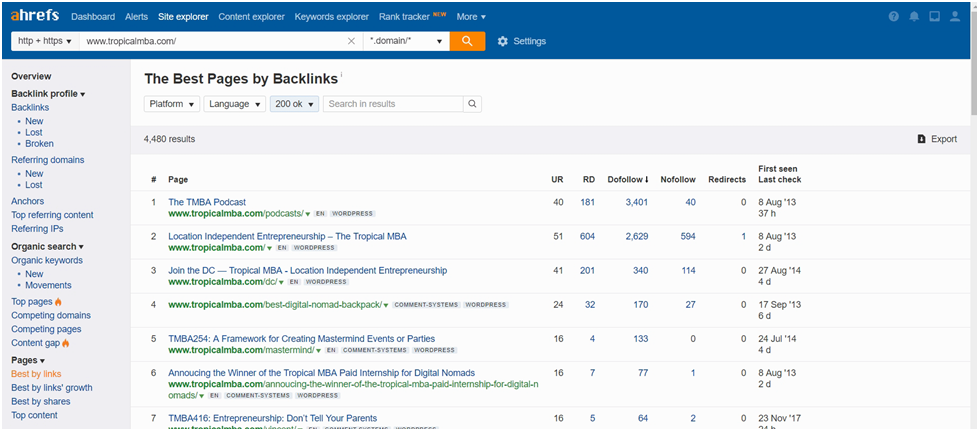Find On Page Optimization Oppertunities On A Website
Find On Page Optimization Oppertunities On A Website
Last Updated / Reviewed :4th January 2025
Execution Time : 5-7 hours (depending on ho
w large your site is

Goal : Knowing which of the pages you should optimize in a website, especially when there are a lot of them and you don’t have much time at your disposal to optimize each of them
Ideal Outcome : You will be able to easily determine the most important pages in your site, so that you get the highest ROI on the time you spend optimizing your site.
Pre-requisites or requirements : It is recommended that you know how to perform keyword research. Our SOP 011 will teach you how to do this.
Why this is important : On-page optimization is absolutely crucial for your SEO efforts. However, if your website is hundreds or thousands of pages long, and it has never been optimized, the 80/20 site-wide on-page optimization method presented in this SOP will help you determine which pages to optimize first.
Where this is done : In your browser, using Ahrefs and Google Sheets, as well as KW Finder for your keyword research.
When this is done : When you decide to perform on-page optimization on a large website.
Who does this : You, your VA, your SEO specialist, or a digital marketing agency you have employ
● Environment setup
- If you don’t have an Ahrefs account, create one here (7$ trial available for the first 7 days).
● Finding the on-page optimization opportunities
- Go to 80/20 Site-Wide On-Page Optimization – Worksheet and make a copy of the spreadsheet to use throughout the process.
- Open Ahrefs.
- Enter the website URL in the search bar.
- Make sure to include both http + https (left selection menu).
- Select *.domain/* (domain with all its subdomains in the right selection menu).
- Click search to analyze your domain.
- Click on “best by backlinks” in the left sidebar.
- Under http code, select “200 OK”.
- Sort results by “Dofollow”.

- For each result with more than 10 dofollow links, click on the little arrow next to it → right click on Organic keywords → Open it in a new tab.

- Ask yourself the following questions to see if this is a good opportunity for on-page optimization:
- Is it ranking for high-volume keywords that are also relevant to that content?
- If NO, then this is probably a good candidate for on-page optimization. You can add it to the worksheet and move on to the next result.
- If YES, then move on to the next question.
- Is it optimized for that keyword?
- If NO, then this is probably a good candidate for on-page optimization. You can add it to the worksheet and move on to the next result.
- If YES, then move on to the next question.
- Is it ranking in the top 5 positions for that keyword?
- If NO, then this is probably a good candidate for on-page optimization. You can add it to the worksheet and move on to the next result.
- If YES, then you can skip this URL and move on to the next result.
- Repeat the previous steps until you’re done with the URLs on the “best by backlinks” list.
● Finding target keywords for each page
- Take each of the URLs you have gathered in your worksheet and perform keyword research to relevant keywords for the content of that page.
- As mentioned in the beginning of this SOP, you can learn how to run in-depth keyword research in SOP 011.
- When you find a relevant keyword that shows an attractive search volume for the page, add it to the “Target keyword” column in the worksheet.
- If you cannot find any relevant keywords with a search volume large enough, just write “N/A” in the “Target keyword” column and move to the next link/page in your worksheet.
Like all keyword research processes, this might take some time, especially if you have a large site. Hang in there, it’ll be more than worth investing this time into your website’s health!
- Performing on-page optimization
Once you go through the steps described above in this SOP, you can move on to the actual on-page optimization for each of the URLs with a relevant target keyword in your worksheet.
On-page optimization is an easy process that will usually take less than 5-10 minutes for each of the URLs you have to optimize. We have described this process in SOP 018 – so if you don’t know how to do it, you can check it out.
That’s it! Remember, this is not a full website optimization – but it will still help your website perform better in the SERPs. If you are running short on time and if your website is large enough to make a full optimization a lengthy process, the 80/20 method will give you a good head-start in the SEO world, giving you more time to optimize the remaining pages as well.


